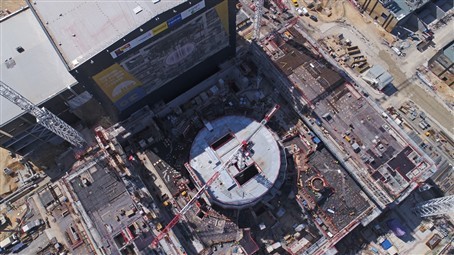2000 eyes to oversee the works at the ITER Tokamak complex


ITER counts at least 10 million components which will need to be fitted carefully in the machine. But that’s not all. The list grows if ones takes into consideration the civil engineering equipment and infrastructure which will be required to house the biggest-ever fusion device. Engineers are striving for milimetric accuracy and in spite of the XL size of the ITER machine, space is a real issue because it is limited. Consequently, everything needs to be installed neatly and accurately. Think for instance of the position of the embedded plates in the Tokamak building or the assembly of the massive equipment. It’s a jigsaw where all parts are interconnected. A titanic operation that can only be carried out with the help of metrology, a discipline traced in Ancient Greece, where the word comes from, which means the science of measurement.

More than 2 500 people are directly involved in the civil engineering works of ITER with various contractors and subcontractors. The interfaces are multiple, at times they need to be revised, and in the end everything must come together in a seamless manner. The Metrology groups of F4E and ITER Organization (IO) have embarked on a mission to set up a network that will help contractors to carry out their work with precision. It is made of several fiducial nests which with the help of laser beams identify the exact coordinates of each component at the Tokamak complex. Colleagues from IO have designed and simulated the network layout using SpatialAnalyzer® metrology software to mark the exact locations of these nests. Parallel to this, the last 18 months, F4E has been working with SETIS/PES, a Franco-British consortium, to carry out the installation of the nests and conduct the measurements. So far, 1 000 of these watchful “eyes” have been positioned on-site and another 1 000 will follow. Thanks to the installation and the measurements provided by the fiducial nests, it has been possible to scan 10 000 embedded plates, at a rate of 300 per day, which amounts to a tenth of the total number of the embedded plates in the Tokamak complex.

“The close collaboration with our colleagues from ITER Organization has been instrumental in developing this metrology network” explains Luigi Semeraro, F4E Metrology Group Leader. “It is a great achievement if you think that we have created a sophisticated measurement system for the most complex building of the project.” For Giacomo Calchi, F4E Metrology, “good planning has been essential towards the success of this operation because we needed to respect the sequence of civil engineering works. We had to install the metrology network without disturbing the contractors working on-site.” Gaël Archambeau, on behalf of SETIS, explains that “setting up the network of fiducial nests in the Tokamak complex is an important milestone for the ITER project. Our consortium, SETIS-PES, delivers the coordinates that will allow the machine assembly activities to unfold through a single and monitored coordinates system. Our know-how and the experience we have drawn from similar projects, like the EPR in France, are now at the service of the biggest fusion experiment.”